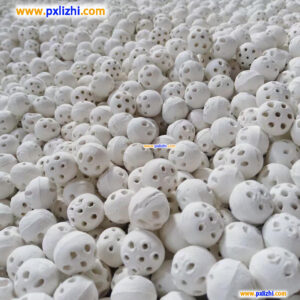
# Alumina Ceramic Ball: Properties and Applications
## Introduction to Alumina Ceramic Balls
Alumina ceramic balls are high-performance industrial components made from aluminum oxide (Al₂O₃). These precision-engineered spheres have become essential in various industries due to their exceptional mechanical, thermal, and chemical properties. With alumina content typically ranging from 90% to 99.9%, these ceramic balls offer superior performance compared to traditional metal alternatives in many applications.
## Key Properties of Alumina Ceramic Balls
### 1. Exceptional Hardness and Wear Resistance
Alumina ceramic balls boast a Mohs hardness of 9, second only to diamond. This extreme hardness makes them highly resistant to wear, even under continuous friction and mechanical stress. Their wear resistance is approximately 100 times greater than that of steel, ensuring long service life in abrasive environments.
### 2. High Temperature Stability
These ceramic balls maintain their structural integrity at temperatures up to 1,600°C (2,912°F), with minimal thermal expansion. This property makes them ideal for high-temperature applications where metal components would deform or fail.
### 3. Chemical Inertness
Alumina ceramic balls demonstrate excellent resistance to acids, alkalis, and organic solvents. They won’t corrode or react with most chemicals, making them suitable for harsh chemical environments where metal balls would deteriorate.
### 4. Electrical Insulation
With high dielectric strength and volume resistivity, alumina ceramic balls serve as excellent electrical insulators. This property is particularly valuable in electronic and electrical applications.
### 5. Low Density
Compared to metal balls, alumina ceramic balls are significantly lighter (about 60% the weight of steel), reducing energy consumption in rotating applications and minimizing inertial forces.
## Common Applications of Alumina Ceramic Balls
### 1. Bearing Systems
Alumina ceramic balls are widely used in hybrid and full ceramic bearings for applications requiring:
– High-speed operation
– Corrosion resistance
– Non-magnetic properties
– Operation in extreme temperatures
### 2. Grinding and Milling Media
In the pharmaceutical, paint, and ceramic industries, alumina balls serve as grinding media due to their:
– High density
– Wear resistance
– Chemical purity
– Contamination-free grinding
### 3. Valve Components
The chemical inertness and wear resistance make alumina balls ideal for:
– Check valves
– Ball valves
Keyword: alumina ceramic ball
– Metering valves
– Control valves in corrosive or high-purity fluid systems
### 4. Semiconductor Industry
Ultra-high purity (99.9%) alumina balls are used in semiconductor manufacturing for:
– Wafer handling
– Process equipment components
– Clean room applications
### 5. Other Specialized Applications
– Aerospace components
– Medical implants and devices
– Textile machinery guides
– Pump components
– Nuclear industry applications
## Selection Considerations
When choosing alumina ceramic balls for specific applications, consider these factors:
### 1. Alumina Content
Higher alumina content (99%+) offers better properties but at higher cost. Select based on application requirements.
### 2. Size and Tolerance
Precision-ground balls are available in sizes from 0.5mm to 100mm with tight tolerances for critical applications.
### 3. Surface Finish
Options range from standard to mirror finishes, affecting friction and wear characteristics.
### 4. Grade and Purity
Industrial (90-95% Al₂O₃) vs. high-purity (99%+ Al₂O₃) grades for different performance needs.
## Maintenance and Handling
While alumina ceramic balls are extremely durable, proper handling ensures optimal performance:
– Avoid impact loading
– Use compatible mating materials
– Clean with appropriate methods
– Store in controlled environments
## Future Trends
Advancements in ceramic technology continue to expand alumina ball applications:
– Nanostructured alumina for enhanced properties
– Composite ceramic materials
–
